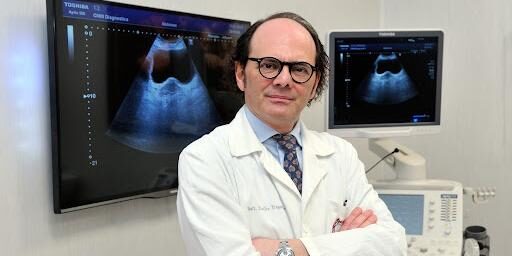There’s a new hope for women who have breast cancer. Thanks to the discoveries of the Salerno researcher Ersilio Trapanese, member of the Nefrocenter Research team, the medical group specializing in research for nephrology and dialysis, diabetology, and cardiology.
According to the theory of the doctor from Cava de’ Tirreni, breast cancer could have a spiral growth pattern, making the breast neoplastic lesion follow the same pattern as phyllotaxis, the Golden Section and the Fibonacci sequence, drawing its growth and expansion energy from blood capillaries and from the imbalance of the cells’ bioelectrical activity influenced by gravity.
“Breast cancer could have a spiral growth pattern and an important connection with the influence of gravity”, claimed Ersilio Trapanese in a study published in the authoritative international scientific journal Translational Medicine Communication & Springer Nature.
Trapanese’s research, which saw an important collaboration with Professor Giulio Tarro, opens up a new theory on spiral breast cancer through the development of a theoretical model, a predictive algorithm of histological types and the percentage of tumors detected in the Golden Section (Golden Ratio Φ) and in the Fibonacci sequence.
Trapanese conducted a study for the identification and the characterization of suspicious breast lesions using a new diagnostic technique applied to ultrasound and mammography called PhiΦBreast for the identification of lesions of the C4-C5 categories with high positive predictive value (Ppv), still respecting the criteria of the American college of radiology (Acr) and the Breast imaging reporting data system (Bi-Rads).
According to the intuition of the researcher from Salerno, the action of gravity would play an important role in the growth process that produces the neoplastic spiral.
In this sense, the mammary gland could represent an interesting model of human fractal geometry where the phyllotactic rules are reasonably applied and where the deviation from normality would give rise to dysfunctions.
In this sense, according to the spiral cancer theory, the breast neoplastic lesion would follow the same pattern of phyllotaxis, the Golden Section and the Fibonacci sequence, drawing energy for growth and expansion from the blood capillaries and from the imbalance of the bioelectrical activity of the cells affected by gravity.
Gravity itself acts as a mechanical stress on the bioelectrical and genetic processes of the cells and, together with neoangiogenesis, pushes the structural imbalance towards tumor growth.
“This scientific research’s mission – explains the doctor Ersilio Trapanese – is to inform both the global scientific community and the cancer patients that, thanks to the development of a new revolutionary technology, we are now able to detect breast cancer in an even earlier stage, paving the way for a new era in the diagnosis, therapy and resolution fields related to this disease”.
(La Città di Salerno)

